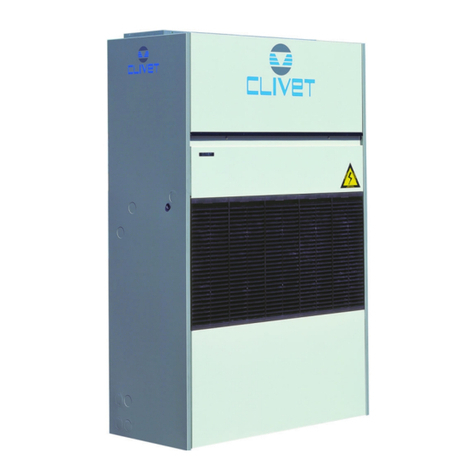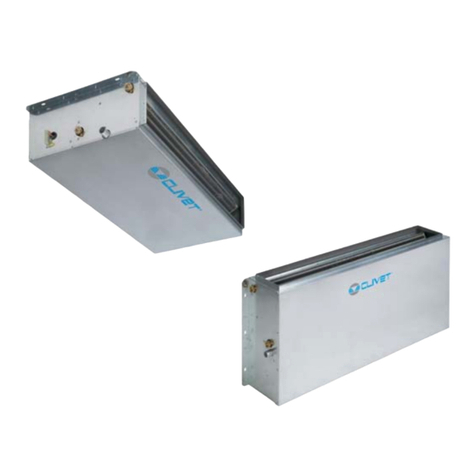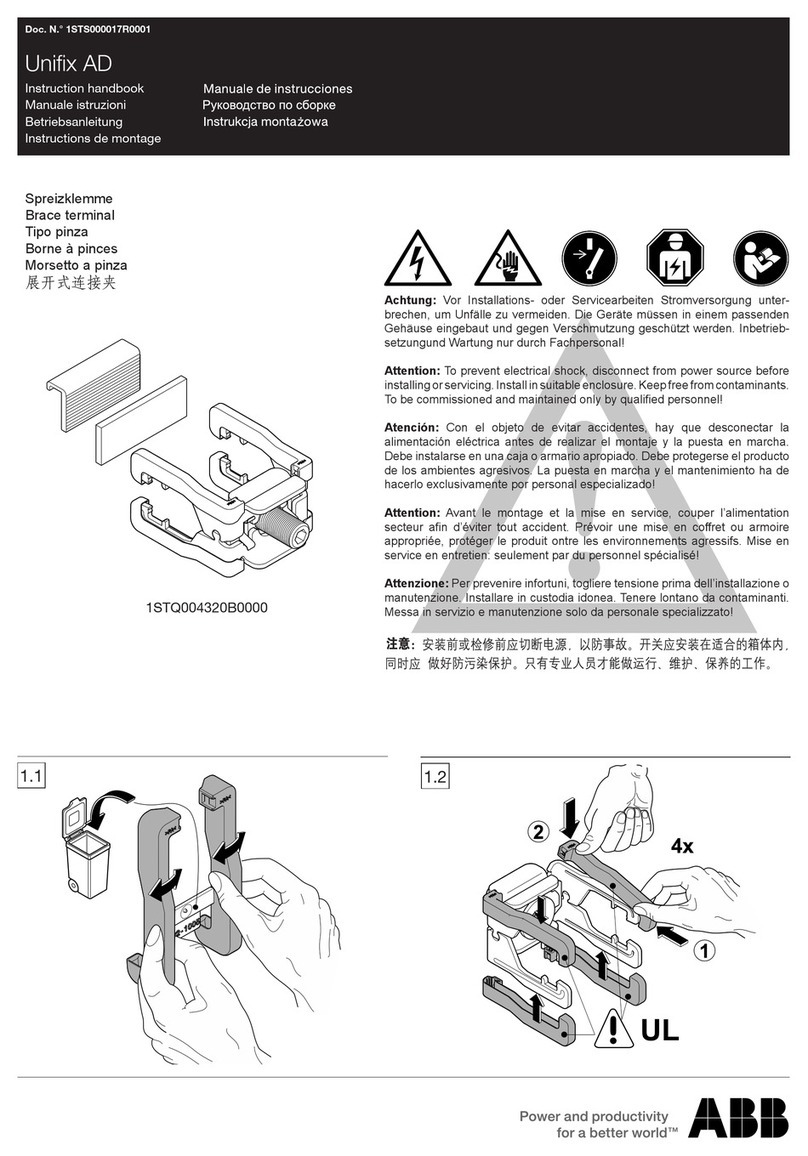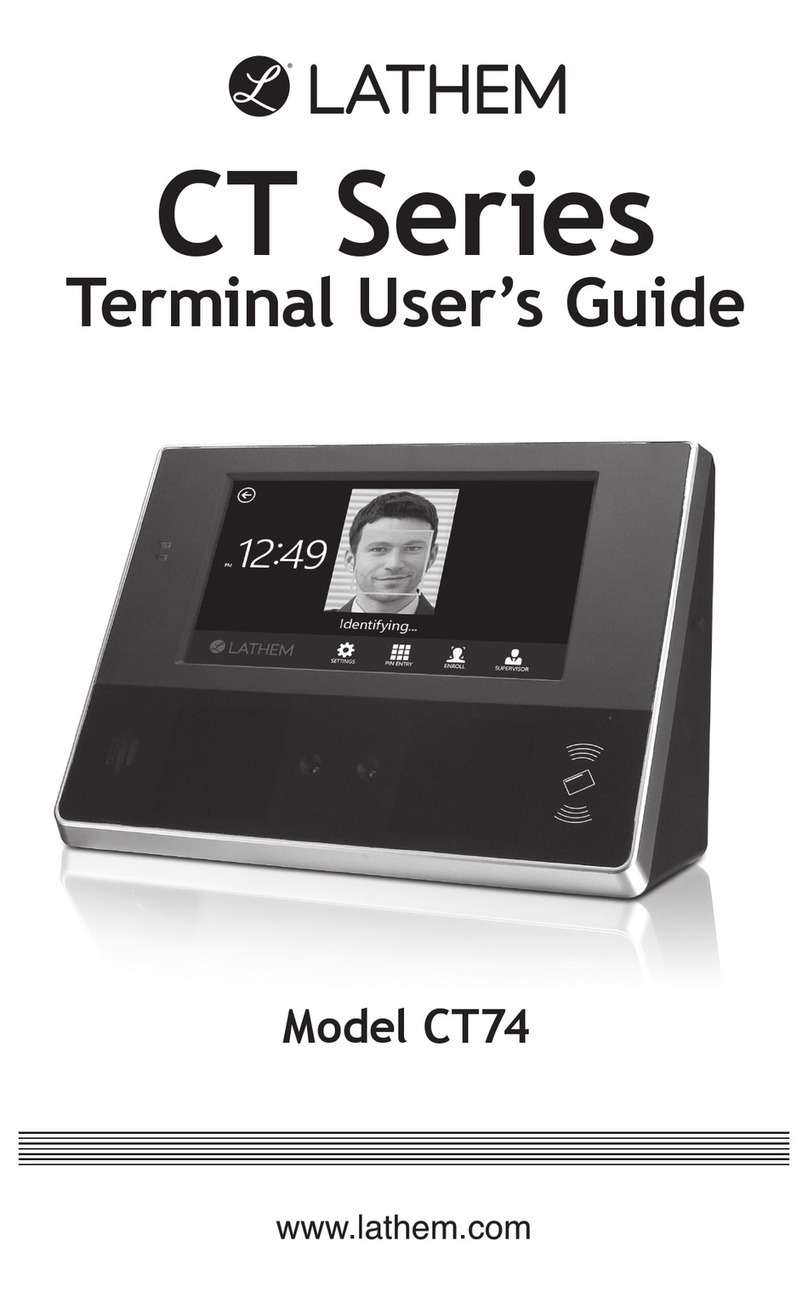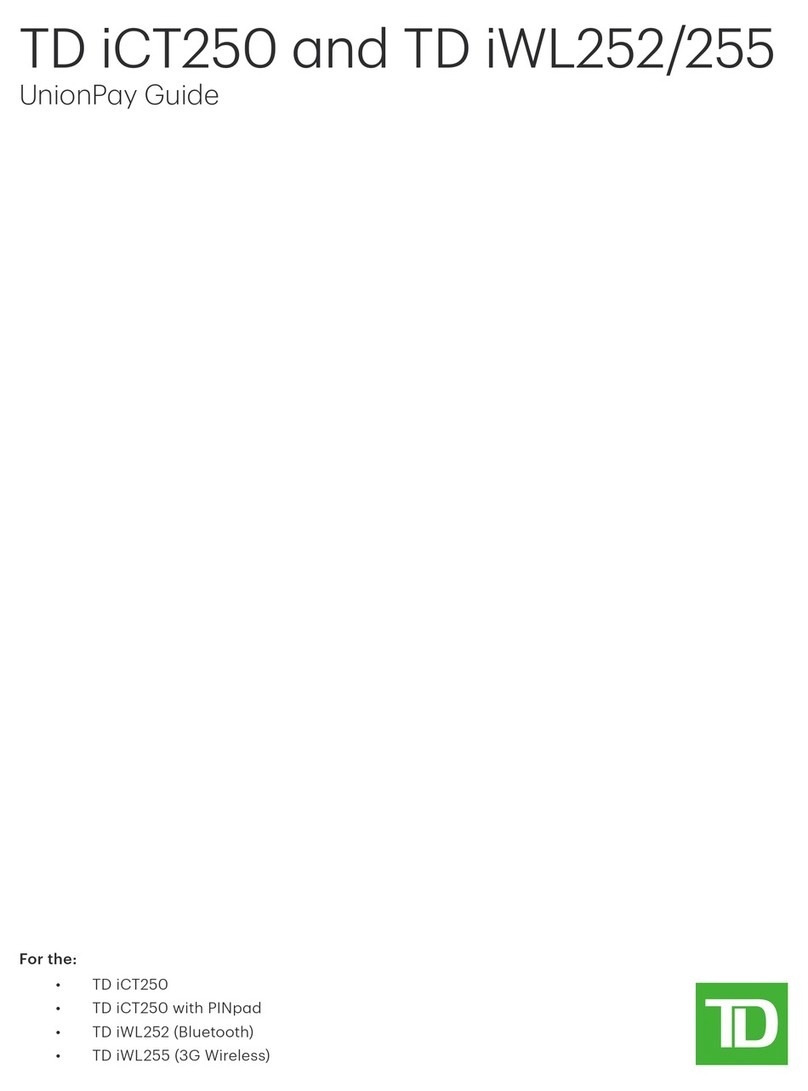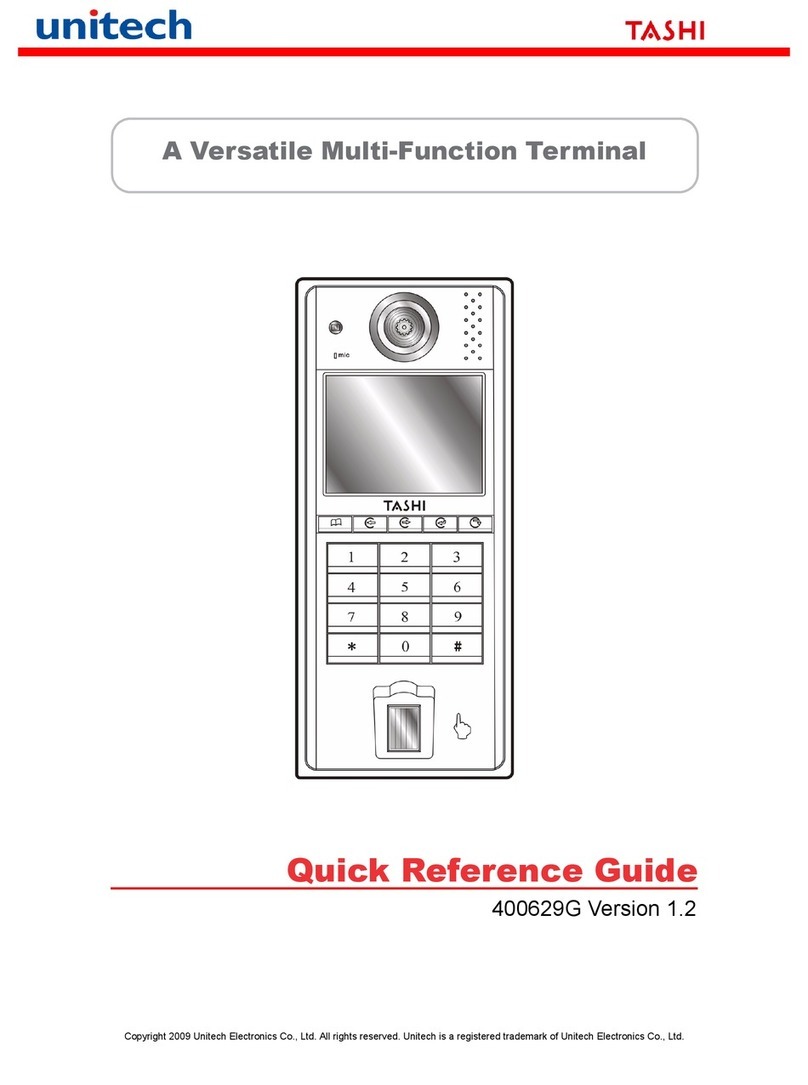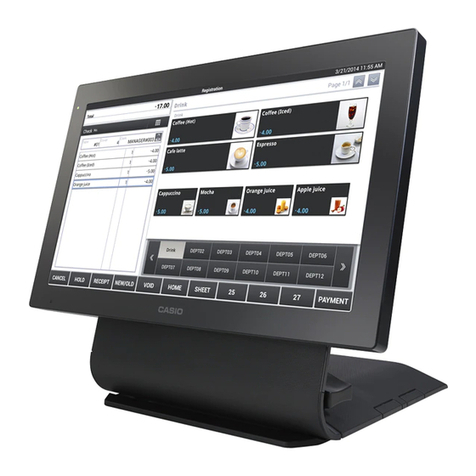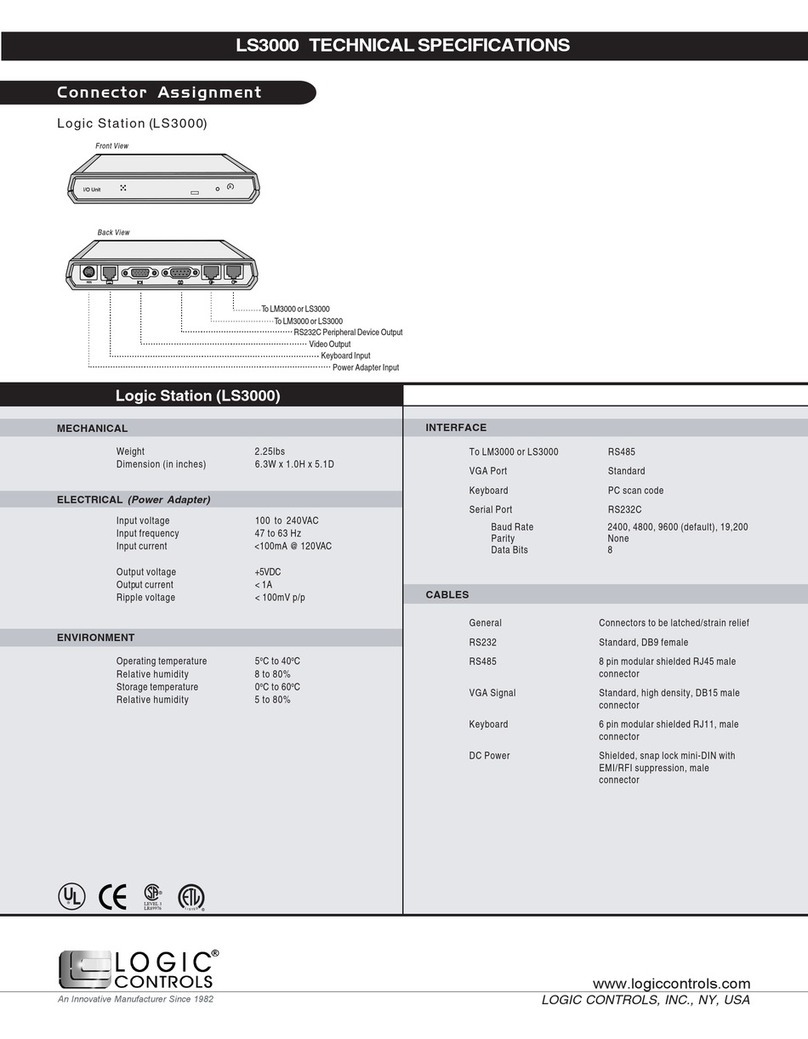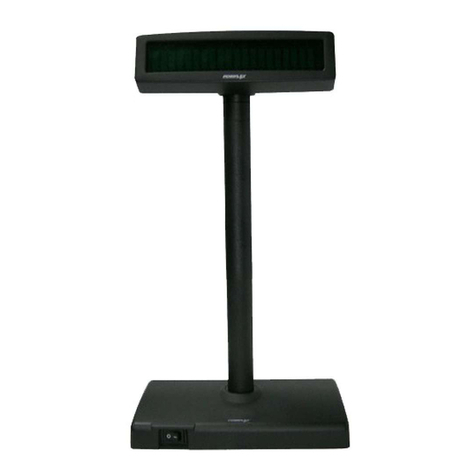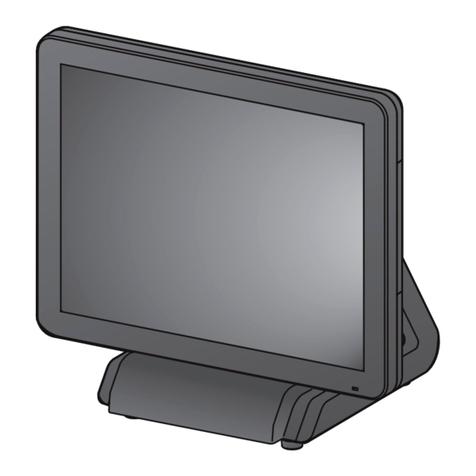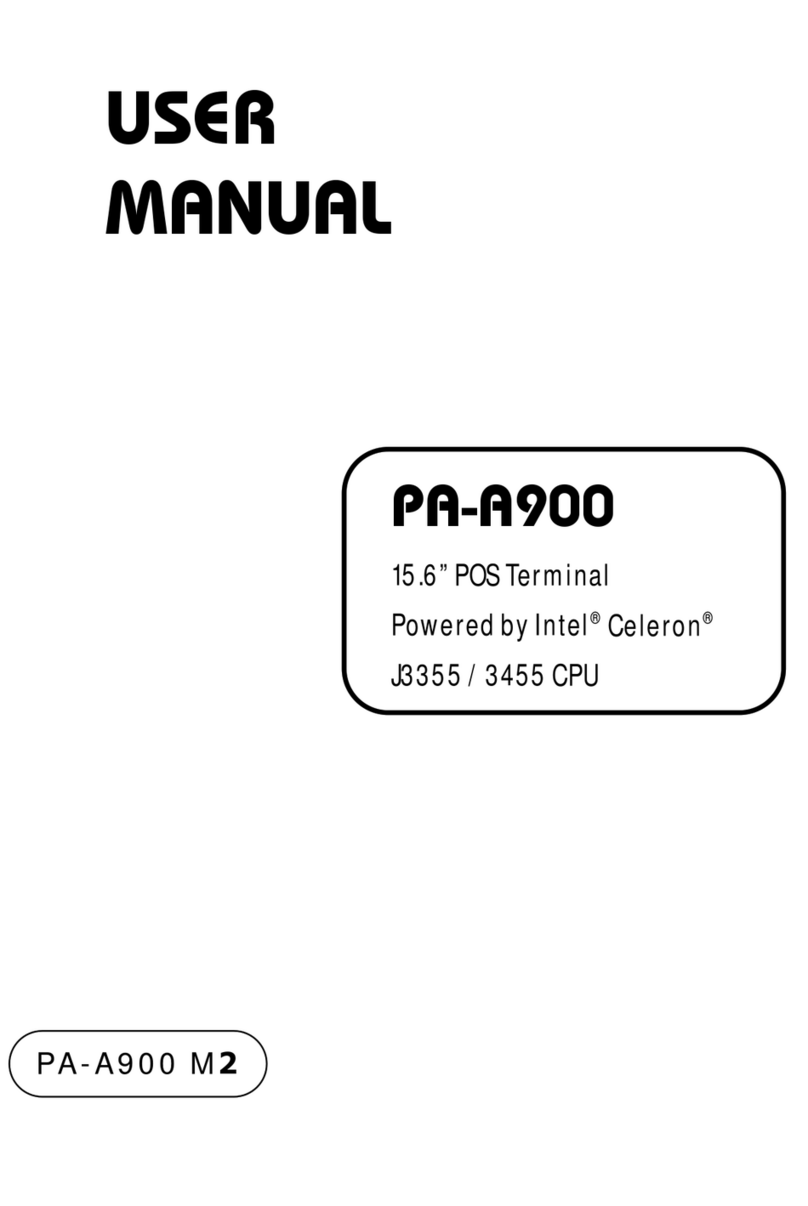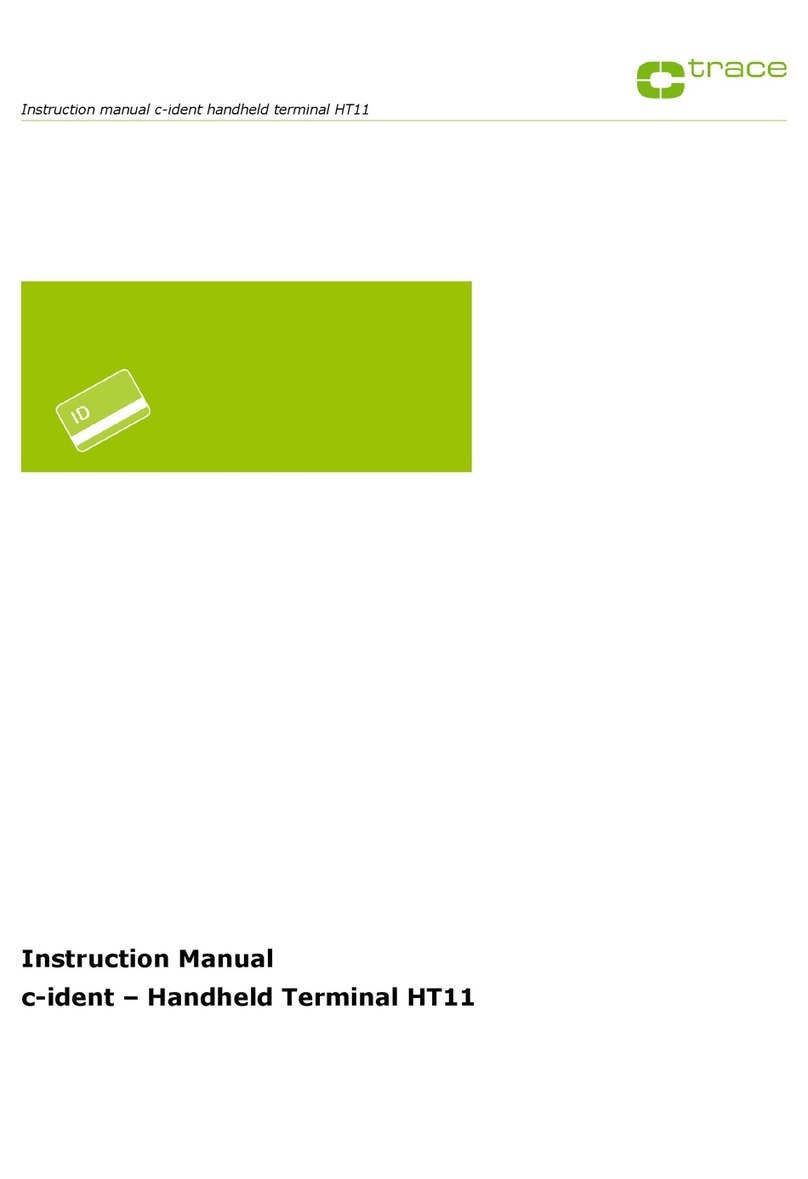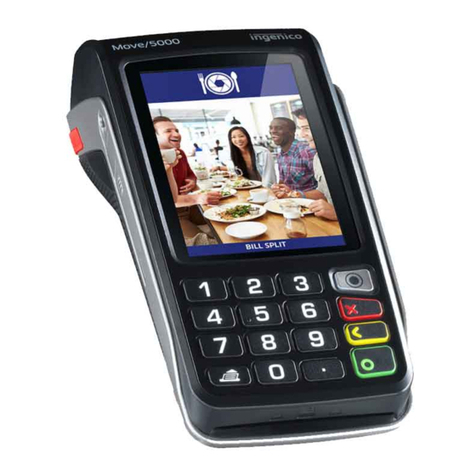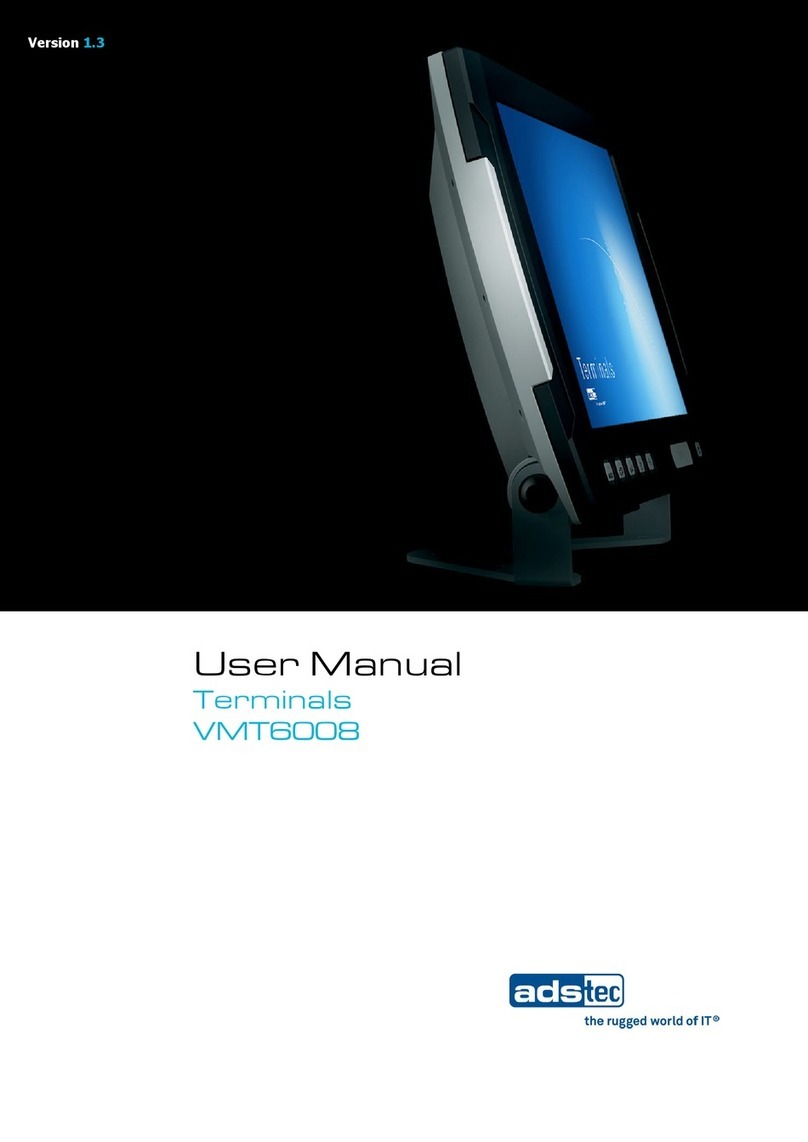CLIVET ELFORoom2 003.0 User manual

Change living home
ELFORoom2003.0 - 005.0 - 011.0 - 015.0 - 017.0
Water terminal
M09160D17-02 49

Dear Customer,
We congratulate you on choosing an ELFOSystem product, the air conditio-
ning system at annual cycle that offers the possibility in a sole system of mee-
ting all the heating, conditioning and domestic hot water needs.
Clivet is being working for years to offer systems able to assure the maximum
comfort for long time with high reliability, efficiency , quality and safety. The
target of the company is to offer advanced systems, that assure the best com-
fort, reduce the energy con-sumption, the installation and maintenance costs
for all the life-cycle of the system.
With this manual, we want to give you information that are useful in all the
phases: from the reception, to the installation and use until the disposal so
that a system so advanced offers the best procedure of installation and use.
Best regards and have a nice reading !
CLIVET Spa
M09160D17-02 50

INDEX
1
2
3
4
General 52
Reception 55
Positioning 55
Water connections 59
Electrical connections 65
Control 75
Maintenance 86
Technical data 89
Residual risks 90
Decommissioning 94
5
6
7
8
9
10
The data contained in this bulletin is not binding and may be changed by the manufacturer wi-
thout prior notice.All reproduction, even partial, is prohibited.
M09160D17-02 51

1 - GENERAL
1.2 GENERAL INSTRUCTIONS
Preliminaries
The positioning, hydraulic system, refrigerating, electrics and
the channelisation of the air must be determined by the sy-
stem designer in accordance with local regulations in force.
On the unit can operate only qualified personal , as determi-
ned by the regulations in force.
Using the unit in case of breakdown or malfunction :
x voids the warranty
x may compromise the safety of the machine
x may increase time and repair costs.
Follow local safety regulations. .
Keep packing material out of children’s reach it may be dan-
gerous. .
Recycle and dispose of packing material in conformity with
local regulations. .
Risk situations
The unit has been designed and created to prevent injures to
people.
During designing it is not possible to plane and operate on all
risk situation.
Read carefully "Residual risk" section where all situation
which may cause damages to things and injuries to people
are reported.
Installation, starting, maintenance and repair required specific
knowledge; if they are carried out by inexperienced personnel,
they may cause damages to things and injuries people.
Intended use
Use the unit for cooling/heating water or a water and glycol
mix for air-conditioning only, within limits defined in the techni-
cal bulletin and on this manual..
Any use other than intended does not involve the manufactu-
rer in any commitment or obligation. .
Installation
Verify that the electrical line characteristics are in compliance
with data quotes on the unit serial number label.
Maitenance
Plan periodic inspection and maintenance in order to avoid or
reduce repairing costs.
Turn the machine off before any operation.
Modification
All unit modifications will end the warranty coverage and the
manufacturer responsibility. .
Breakdown/Malfuction
Disable the unit immediately in case of breakdown or malfunc-
tion. .
Contact a constructor certified assistance service.
Use original spares parts only.
User training
The installer has to train the user on :
x start-up / shutdown;
x set points change;
x standby mode;
x maintenance;
x what to do / what not to do in case of breakdown.
Data update
Continual product improvements may imply manual data
changes .
Keep this manual with the wiring diagram in an accessible
place for the operator.
Note the unit lable data so you can provide them at the assi-
stance centre in case of intervention (see "Unit identification"
section).
Provide a machine notebook that allows any interventions
carried out on the machine to be noted and tracked making it
easier to suitably note the various interventions and aids the
search for any breakdowns.
In case of breakdown or malfunction:
x immediately deactivate the unit .
x contact a constructor certified assistance service.
x use original spares parts only
Ask the installer to format on:
x start-up / shutdown;
x set points change;
x standby mode;
x maintenance;
x what to do / what not to do in case of breakdown.
1.3 INDICATIONS FOR THE USER
The manual provides correct unit installation, use and
maintenance.
Pay particolar attention to:
Warning identifies particularly important operations or
information .
Prohibited operations that must not be carried out, that
compromise the operating of the equipment or may cause
damage to persons or things.
x It is advisable to read it carefully so you will save time
during operations.
x Follow the written indications so you will not cause
damages to things and injuries people. The preliminary
information must be read prior to carrying out any of the
following operations.
1.1 MANUAL
Operate in compliance with safety regulations in force.
M09160D17-02 52

1 - GENERAL
Remember that some fundamental safety rules should be
followed when using a product that uses electricity and water,
such as:
x It is forbidden for the appliance to be used by children or
unassisted disabled persons.
x It is forbidden to touch the appliance with wet hands or
body when barefoot.
x It is forbidden to carry out any cleaning before having
disconnected the appliance from the electricity mains
supply by turning the system master switch to "OFF".
x It is forbidden to modify the safety or adjustment devices
or adjust without authorisation and indications of the
manufacturer.
x It is forbidden to pull, cut or knot the electrical cables
coming out of the appliance, even if it is disconnected
from the mains supply.
x It is forbidden to poke objects or anything else through the
inlet or outlet grills.
x It is forbidden to open the doors which access the internal
parts of the appliance without first turning the system
master switch to "OFF".
x It is forbidden to dispose of or leave in the reach of
children the packaging materials which could become a
source of danger.
x It is forbidden to climb onto the appliance or rest any
object on it.
x The external parts of the appliance can reach
temperatures of more than 70°C.
DANGER FROM BURNS -TAKE CARE WHEN TOUCHING
1.4 FUNDAMENTAL SAFETY RULES
1.5 UNIT INDENTIFICATION
Serial number label
The serial number label is positioned on the unit and allows to
indentify all the unit features.
It has not to be removed for any reason.
It reports the regulations indications such as:
x machine type,
series ĺELFOROOM2
size ĺ003.0 ( o 005.0………….017.0)
x Serial number
Axxxxxxxxxxx
x year of manufacture
x wiring diagram number
x electrical data
x manufacturer logo and address
Serial number
It identifies uniquely each machine.
It identifies specific spare parts for the machine.
Assistance request
Note data from the serial number label and write them in the
chart on side, so you will find them easily when needed.
In case of intervention you have to provide data.
Series
Size
Serial number
Year of manufacture
Wiring diagram
1.6 UNIT VERSION
Vertical - Horizontal in view
Vertical - Horizontal uncased
M09160D17-02 53

1 - GENERAL
1.7 ACCESSORIES
Each accessory is accompanied by its instruction leaflets for assembly.
x KASPX
Intake plenum kit
x GMX
Outlet grille
x GRA1X
Air outflow grille
x PR90MX
90° air outlet plenum kit
x PMSTX
Telescopic upper supply plenum kit
x KV3B4X
3-way valve kit with electrothermal head and balancing for 4-pipe system (available only with options:B4T)
x KV3VBX
3-way valve kit with electrothermal head and balancing for the 2-pipe version
x HIDE1X
Remote control with 3 position switch + on/off for wall installation (available only with options: 3V010)
x HIDE2X
Remote control with E/I +3V +on/off for wall installation (available only with options: 3V010)
x HIDE3X
Plurifunctional remote control for wall installation (available only with options: 3V010)
x HID-T2X
HID-T2 electronic ambient control
(external, temperature only)
x HID-T3X
HID-T3 electronic ambient control
(external, temperature and humidity)
x HID-TI2X
HID-TI2 flush-mounted electronic ambient control
(wall-mounted, temperature only)
x KCMDX
Motor connection cables for unit with couplings on the right
x PCIX
Uncased closure panel
x BACKVX
Painted back panel for cased version
x CSFIX
Formwork for uncased installation
x FXPPX
Floor fixing bracket kit
x KPDX
Plinth kit
M09160D17-02 54

General
Operate in compliance with safety regulations in force .
For detailed information (dimensions, weight, technical
characteristics etc.) please refer to the “Technical
information” section.
Use single protection devices : gloves, glasses ecc.
Stocking
Observe external packing instructions .
Handling
Verify unit weight and handling equipment lifting
capacity .
Identify critical points during handling (disconnected
routes, flights, steps, doors).
Verify the position of the barycentre in the Technical
information - DIMENSIONS section.
Before handling verify that the unit keeps its balance.
Packing removing
Be careful not to damage the unit.
Recycle and dispose of packing material in conformity
with local regulations.
General
Operate in compliance with safety regulations in force.
For detailed information (dimensions, weight, technical
characteristics etc.) please refer to the TECHNICAL
INFORMATION section.
Use single protection devices : gloves, glasses ecc.
During positioning consider these elements :
x technical spaces required for the machine and system
x place where the machine will be installed
x electrical connections
x water connections
x air / aeraulic ducts
Do not considerer these elements could decrease
performances and operational life of the unit.
2.1 PRELIMINARY INFORMATION
2 - RECEPTION / 3 - POSITIONING
2.2 DELIVERY CONTROL
2.3 HANDLING
3.1 PRELIMINARY INFORMATION
Do not tramble
Do not handle the unit alone
Do not leave loose packages during the transport
Before accepting the delivery you have to check:
x That the unit hasn’t been damaged during tran-
sport.
x Check that the materials delivered correspond
with that indicated on the transport document
comparing the data with the identification label
positioned on the packaging.
In case of damage or anomaly:
x Write down on the transport document the da-
mage you found and quote this sentence:
"Conditional acceptance — clear evidence of
deficiencies/damages during transport".
x Contact supplier and the carrier by fax and regi-
stered mail with advice of receipt.
Any disputes must be made within the 8 days following
the delivery. Complaints after this period are invalid.
3 - POSITIONING
M09160D17-02 55

3 - POSITIONING
3.2 FUNCTIONAL SPACES
3.3 POSITIONING
Functional spaces are designed to:
x guarantee good unit operation
x Carry out maintenance operations
x protect authorized operators and exposed people.
Respect all functional spaces indicated in the figure.
x in proximity to sources of heat;
x in damp areas or places with probable contact with water;
x in places with oil fumes
x places subject to high frequencies.
Make sure that :
x the wall on which the unit is to be installed is strong
enough to support the weight;
x the part of the wall interested does not have pipes or elec-
tric wires passing through;
x the interested wall is perfectly flat;
x there is an area free of obstacles which could interfere
with the inlet and outlet air flow;
x the installation wall is preferably an outside perimeter wall
to allow the discharge of the condensation outside;
x in case of ceiling installation the airflow is not directed
towards persons.
If provided a wall-mounted ambient thermostat - OPTION
Avoid installing the unit in proximity to:
x positions subject to exposure to direct sunlight;
Ambient thermostat
The choice of the installation point is decisive for the
environmental comfort and the energy consumption.
The thermostat must be placed :
x In a room with medium temperature and humidity
conditions, representative of the other rooms
x at a height of 150 cm
x preferably on an internal wall
Positions to avoid :
x next to heat sources
x points exposed to direct sunlight
x in a position with air rejected from outlets or diffusers
x behind curtains or pieces of furniture
x near windows and doors to the outside
x on walls crossed by fireplaces or heating ducts
x on external walls.
*= dimensions to follow to assemble the 90° insulated supply
plenum kit, code PR90MX
**= dimensions to follow to assemble the telescopic upper
supply plenum kit, code PMSTX.
1,5 m
OK
M09160D17-02 56

3.6 HORIZONTAL OR CEILING INSTALLATION
x Using the paper template, trace on the ceiling the position of the two fixing brackets and the two rear screws.
x Using a suitable drill, make the holes and insert the toggle bolts (2 for each bracket) (fig. 3.1 ref. A); fix the two brackets (fig. 3.1
ref. B). Do not over-tighten the screws.
x Position the machine on the two brackets, keeping it in position and then fix the two screws into the rear toggle bolts (fig. 3.1 ref.
C), one on each side.
x Make sure that there is sufficient inclination of the unit towards the drainage pipe to facilitate the water drainage (fig. 3.1 ref. D).
x Fully tighten all 6 fixing screws.
3.5 SIDE OPENING
3 - POSITIONING
The following descriptions of the various mounting phase and the relative designs refer to a version of the machine with fixtures on the
left. The operations for the mounting of machines with fixtures on the right are exactly the same.
Only the images are to be considered as a mirror image.
3.4 INSTALLATION
fig 3.1
x lift A
x unscrew B
x move to the left C
x lift C
x lift A
x unscrew B
x move to the right D
x lift D
M09160D17-02 57

3 - POSITIONING
3.7 VERTICAL FLOOR OR WALL INSTALLATION
When floor mounting with support pins, respect the min. ground height of 80mm., for the pin mounting and refer to the individual
instructions leaflets supplied and the relative manual
x Using the paper template, trace the position of the two fixing brackets on the wall (fig. 3.2).
x Use a suitable drill to make the holes with and insert the toggle bolts (2 for each bracket) (fig. 3.3 ref. A); fix the two brackets (fig.
3.3 ref. B). Do not over-tighten the screws so that the brackets can be adjusted with a spirit level (fig. 3.4).
x Fully tighten the four screws to block the two brackets.
x Check the stability by manually moving the brackets to the right and to the left, up and down.
x Mount the unit, checking that it fits correctly onto the brackets and checking that it is stable (fig. 3.5).
fig 3.2 fig 3.3
fig 3.4 fig 3.5
M09160D17-02 58

4 - WATER CONNECTIONS
Inlet water : EUROKONUS 3/4
Outlet water : EUROKONUS 3/4
Condensate discharge :Ø14 mm (internal diameter)
For the position of the pipeline and the wall fixings, refer to the
designs shown in the following sections, based on the specific
configuration.
4.1 PIPELINE DIAMETER
The choice and sizing of the hydraulic lines must be made by
an expert who must operate according to the rules of good
technique and the laws in force.
4.2 CONNECTIONS
To make the connections:
x position the hydraulic lines ( ref. A)
x tighten the connections using the “spanner and counter
spanner” method ( ref. B)
x check for any leaks of liquid
x coat the connections with insulating material ( ref. C).
The hydraulic lines and joints must be thermally insulated.
Avoid partially insulating the pipes.
Do not over-tighten to avoid damaging the insulation.
Use hemp and green paste to seal the threaded connections;
the use of Teflon is advised when there is anti-freeze in the
hydraulic circuit.
4.3 CONDENSATION DISCHARGE
The condensation discharge network must be suitably sized
(minimum inside pipe diameter 14 mm) and the pipeline
positioned so that it keeps a constant inclination, never less
than 1%.
x In the vertical installation, the discharge pipe is connected
directly to the discharge tray, positioned at the bottom of
the side shoulder underneath the hydraulic fixtures.
x In a horizontal installation the discharge tube is connected
to the one already present on the machine.
If possible, make the condensation liquid flow directly in a
gutter or a “rainwater” discharge.
When discharging directly into the main drains, it is advisable
to make a siphon to prevent bad smells returning up the pipe
towards the room. The curve of the siphon must be lower
than the condensation collection bowl.
If the condensation needs to be discharged into a container, it
must be open to the atmosphere and the tube must not be
immerged in water to avoid problems of adhesiveness and
counter-pressure that would interfere with the normal outflow.
However, on completion of the installation it is advisable to
check the correct outflow of the condensation liquid by slowly
pouring about ½ l of water into the collection tray in about 5-
10 minutes.
If there is a height difference that could interfere with the
outflow of the condensation, a pump must be mounted
(provided by the customer)
Insulate the water lines / In the figure are indicated the optional components
M09160D17-02 59

4 - WATER CONNECTIONS
4.3.2 Condensation discharge VERTICAL version4.3.1 Condensation discharge HORIZONTAL version
x Connect to the condensation collection tray discharge
union (fig. 4.3 rif. A) a pipe for the outflow of the liquid (fig.
4.3 rif. B) blocking it adequately.
x Check that the drip-collector extension (fig. 4.3 ref. C) is
present and correctly installed.
To mount the horizontal bowl refer to the instructions in kits.
x check that the "L" pipe and the flexible rubber hose are
correctly connected to the bowl (fig. 4.1 rif. A).
x slide in the side of the machine keeping the pipe in
position up against the front grill.
x fully close the side checking that the pipe remains blocked
in the special grove on the side (fig. 4.2 rif. B).
For the horizontal installation carefully note the following
precautions:
x make sure that the machine is installed perfectly
level or with a slight inclination towards the
condensation discharge;
x insulate carefully the inflow and outflow pipes up to
the machine union to prevent any drops of
condensation outside the same collection bowl;
x insulate the bowl condensation discharge pipe
along all of its length.
4.4 FIXTURE ROTATION
The operations described and the relative images refer to a
machine with fixtures on the left on which the fixtures on the
right side must be rotated.
If there is a machine available with right side fixtures that
require rotation to the left, the sequence of the operations is
the same, only the images are a mirror image.
To connect the motor to the control kit, use the special
cabling optional.
4.4.1 Dismouting panels
x Dismount the upper grill (fig. 4.4 ref. A) unscrewing the
two fixing screws (fig. 4.4 ref. B)
x On the left-hand side lift the cover covering the screw (fig.
4.4 ref. C) and loosen the screw (D) that fixes the left
panel (fig. 4.4 ref. E) , then move it slightly to the left and
lift it up.
x On the opposite side lift the cover covering the screw (fig.
4.4 ref. C) and unscrew it.
x Move the side panel slightly (fig. 4.4 ref. F) to the right and
lift it.
x Remove the lower front grill (fig. 4.5 rif. G).
x Loosen the screws (fig. 4.5 ref. H-I) fixing the front panel
(fig. 4.5 ref. L) and dismount it.
fig 4.2
fig 4.1
fig 4.3
M09160D17-02 60

4 - WATER CONNECTIONS
4.4.2 Dismounting control panel
x Position the system master switch to OFF.
x Dismount the door that accesses the collector units (fig.
20 ref. A) unscrewing the two fixing screws (fig. 4.6 ref. B).
x Dismount the control panel (fig. 4.6 ref. C) unscrewing the
two fixing screws (fig. 4.6 ref. D).
x Unplug the control board (fig. 4.6 ref. E), unscrewing the
two fixing screws (fig. 4.6 ref. F).
x Unplug the connectors of the electrical connections.
x Remove the cables inside the machine and re-insert them
from the opposite side.
x For the motor connection, use the special cable for right
hand fixtures , available as an accessory.
x Invert the mounting positions of the door (fig. 4.6 ref. A) with
the control panel (fig. 4.6 ref. C) and remount them in their
respective positions.
fig 4.6
fig 4.4 fig 4.5
M09160D17-02 61

4 - WATER CONNECTIONS
4.4.3 Coil rotation for connections on RIGHT
x dismount the condensation collection tray (fig. 4.6 ref. A)
and remount it on the opposite side with the relative fixing
screws (fig. 4.6 ref. B).
x loosen the four screws that fix the lower exchanger (fig.
4.7 ref. C);
x remove the battery water probe;
x remove the exchanger (fig. 4.7 ref. D);
x remove the drip-collector extension from the central tray
(fig. 4.7 ref. E);
x on the opposite side remove the cap on the condensation
evacuation hole (fig. 4.7 ref. F);
x loosen the central condensation collection tray fixing
screw (fig. 4.7 ref. G), move the tray and rest it on the
opposite side so that the fixture mouth for the dripcollector
extension comes out of the structure, and block the tray with
the screw previously removed;
x insert the drip-collector extension (fig. 4.7 ref. E) on the
opposite side (Right), check that is the correctly installed;
x insert the cup (fig. 4.7 ref. F) on the opposite side (Left);
x rotate the exchanger (fig. 4.7 ref. D) moving the fixtures to
the opposite side, and insert it on the machine;
x insert the battery water probe;
x tighten all the fixing screws of the exchanger
x coat the connections with insulating material.
fig 4.7
The cables are fed through the back of the device through the specific hole (ref.H)
The cable, equipped with male/female connectors, must be connected on the right side to the motor and on the left side to the quick
connector of the motor present on the board (ref.I).
Also, the two terminals from the grid safety microswitch must be extended and connected on the left side to contact S1 present on the
board (ref.L).
4.4.4 Motor connection kit cables (accessory KCMDX)
INN-FR-A10 INN-FR-B10
INN-FR-B30
M09160D17-02 62

fig 4.8
The insulating panel must be in the shown position , otherwise the battery is not crossed by air. When all the operations described
have been completed, remount all the components dismounted previously following the dismounting operations in the opposite order.
4.4.6 Mounting panel
Front view
4 - WATER CONNECTIONS
4.4.5 Filling the system
When starting up the system, make sure that the hydraulic
unit lockshield is open. If there is no electric power and the
thermo-valve has already been powered use the special cap
to press the valve stopper to open it.
x Open all the system interception devices (manual or
automatic);
x Start the filling by slowly opening the system water filling
tap;
x For the models installed in a vertical position, take a
screwdriver and act on the highest breather of the battery
(fig.4.8 rif.A);
x for appliances installed in a horizontal position, act on the
highest positioned breather (fig.4.8 rif.B);
x When water starts coming out of the breather valves of the
appliance, close them and continue filling until reaching the
nominal value for the system.
x Check the hydraulic seal of the gaskets.
x It is advisable to repeat these operations after the appliance
has been running for a few hours and periodically check the
pressure of the system.
M09160D17-02 63

4 - WATER CONNECTIONS
4.5 MOUNTING FRONT GRILL SAFETY SUPPORT
x open the front grill and completely unscrew the fixing
screws on the springs (fig. 4.9 rif. B);
x fix the two clamps, blocking them by retightening the screws
(fig. 4.9 rif. B);
x fix the other part of the clamp to the grill using the supplied
screws (fig. 4.9 rif. C);
x Close the grill.
In the case in which the coolerconvector is installed in a
horizontal position, to guarantee the safety of the cleaning/
filter replacement operations it is obligatory that the two
clamps, in the supplied bag together with the instruction
manual and the accessories, are mounted by the installer.
x Separate the two clamps (fig. 4.9 rif. A);
fig 4.9
M09160D17-02 64

The characteristics of the electrical lines must be determined
by specialized personnel able to design electrical installations;
moreover, the lines must be in conformity with regulations in
force.
The protection devices of the unit power line must be able to
stop of presumed short circuit current, whose value must be
determined in function of system characteristic
The power cables and the protection cable section must be
define in accordance with the characteristics of the protections
adoptee.
All electrical operations should be performed by trained
personnel having the necessary requisites by the regulations
in force and being informed about the risks relevant to these
activities.
Operate in compliance with safety regulations in force.
5.1 PRELIMINARY INFORMATION
5 - ELECTRICAL CONNECTIONS
5.5 ACCESS TO THE ELECTRICAL PANEL
Open the sides: instructions at paragraph 3.5.
serial
number
label N° WIRING DIAGRAM
POWER SUPPLY
FLA (A)
FLI (kW)
The serial number label reports the unit specific electrical
data, included any electrical accessories .
The electrical data indicated in the technical bulletin and in the
manual refer to the standard unit, accessories excluded.
Refer to the electrical data report on the serial number label.
5.2 ELECTRICAL DATA
5.3 CONNECTIONS
1. Refer to the unit electrical diagram (the number of the
diagram is shown on the serial number label)
2. Verify that the network has characteristics conforming to
the data shown on the serial number label
3. Before starting work, verify that the sectioning device at
the start of the unit power line is open, blocked and equip-
ped with cartel warning
4. Primarily you have to realize the earthing connection
5. Shelter the cables using adequate measure fairleads
5.4 SIGNAL / DATA
Do not overpass the maximum power allowed, which varies,
according to the type of signal.
Lay the cables far from power cables or cables having a diffe-
rent tension and that are able to emit electromagnetic distur-
bances.
Do not lay the cable near devices which can generate electro-
magnetic interferences.
Do not lay the cables parallel to other cables; cable crossings
are possible, only if laid at 90°.
Connect the screen to the ground, only if there aren’t distur-
bances
Guarantee the continuity of the screen during the entire exten-
sion of the cable.
Respect impendency, capacity and attenuation indications.
6. Before power the unit, make sure that all the protections
that were removed during the electrical connection work
have been restored.
F.L.A. full load ampere
Full load current at max admissible conditions
F.L.I. Full load input
Full load power input
( at max. admissible condition )
Water temperature probe
M09160D17-02 65

4 pipes
Deck
electric
M1 = motor
5 - ELECTRICAL CONNECTIONS
5.6 Connection with room thermostat mounted on- board
BOILER Heating go-ahead output (boiler-caldaia)
free contact max 1A
CHILLER Cooling go-ahead output (chiller)
free contact max 1A
CP Remote ON / OFF
H2 Water temperature probe (10k)
(4 Pipes ĺheating)
(2 Pipes ĺcooling / heating)
H4 Water temperature probe (10k)
(4 Pipes ĺcooling)
S1 Grill safety micro-switch
Y1 Water solenoid valve (4 Pipes ĺheating)
(2 Pipes ĺheating / cooling)
Y2 Water solenoid valve (4 Pipes ĺcooling)
AIR Air temperature probe (10k)
4 Pipes : Y1 + Y2
2 Pipes : Y1
Cased
version Built-in
version
Radiant optional
Only 2 pipes
Gr. 003.0 = n°1
2 pipes
Gr. 015.0 - 017.0 = n°3
Gr. 005.0 - 011.0 = n°2
HRS - Water temperature probe (2k)
OFF unit
ON unit
A - dip-switch position
2 pipes version
4 pipes version
M09160D17-02 66

5 - ELECTRICAL CONNECTIONS
5.7 Connection to HID-Txx electronic room thermostat
4 Pipes : Y1 + Y2
2 Pipes : Y1
4 pipes
M1 = motor
Built-in
On the wall
Cased
version Built-in
version
OFF unit
ON unit
BOILER Heating go-ahead output (boiler-caldaia)
free contact max 1A
CHILLER Cooling go-ahead output (chiller)
free contact max 1A
CP Remote ON / OFF
H2 Water temperature probe (10k)
(4 Pipes ĺheating)
(2 Pipes ĺcooling / heating)
H4 Water temperature probe (10)
(4 Pipes ĺcooling)
S1 Grill safety micro-switch
Y1 Water solenoid valve (4 Pipes ĺheating)
(2 Pipes ĺheating / cooling)
Y2 Water solenoid valve (4 Pipes ĺcooling)
Radiant optional
Only 2 pipes
Gr. 003.0 = n°1
2 pipes
Gr. 015.0 - 017.0 = n°3
Gr. 005.0 - 011.0 = n°2
HRS - Water temperature probe (2k)
Deck
electric
S1
A - dip-switch position
2 pipes version
4 pipes version
M09160D17-02 67

5 - ELECTRICAL CONNECTIONS
HID-iI2 THERMOSTATHID-T2 / T3 THERMOSTAT
5.8 MINI-NETWORK - MAX 9 ELFORoom2
* 120 network termination resistance - customer care
5.9 ELFOSystem GAIA Edition
1. Bus RS485
2. ELFOControl2
3. GAIA
4. ELFOFRESH2
5. Zone with 2 ELFOROOM2with keypad and HID-Ti2 thermostat controls both terminals
6. Zone with 1 ELFOROOM2with keypad and HID-Ti2 thermostat that controls the terminal
7. ELFOROOM2with keypad and HID-T3 thermostat that controls both terminals
8. ELFOROOM2with built-in thermostat
M09160D17-02 68
Other manuals for ELFORoom2 003.0
1
This manual suits for next models
4
Table of contents
Other CLIVET Touch Terminal manuals
